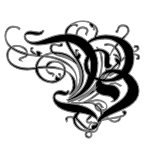
Today is my horse Darcy’s nineteenth birthday, so in honor of my perfect horse, I thought I’d take the opportunity to help clarify a few things about her species for my writer friends. So few people have the chance to interact with horses these days, and they end up getting a lot of ideas about them from TV, movies, or bad childhood experiences. Sometimes, horses are written almost as though they are cars: mindless, emotionless machines that live to serve. Or they come off as wild, untameable mysterious entities. In reality, horses are amazing animals–smart, fun, but also challenging.
Plenty of websites will describe tack, lifespan, breeds, etc, but I’d like to write more about the psychology of the horse and address some common errors that writers make when describing horses in books, movies, and TV.
I’m planning to make this a short series of blog posts, so if you have any questions, please leave them in the comments below, and I’ll try to answer them. If I don’t know the answer, I know someone who does.
Survival Is the Horse’s Primary Concern
People look at a herd of horses in a pasture and see a peaceful, idyllic, pastoral scene, but there’s more going on in a herd than just munching hay.
The Horse Is a Prey Animal: One look at a horse should tell you that he is a prey animal. His eyes are positioned on the sides of his head, not the front like a predator. So what does that mean? His eye position and biology allow him to detect small movements on the horizon so he can have advance warning of a predator drawing near to the herd. In short, the horse is always looking for something to jump out of the woods and eat him. Even Old Glue the ancient work horse and Sweet Sally the lesson pony are keeping an eye out for danger.
There Is Safety in the Herd: The herd evolved as a means of keeping the species safe from predators. Even while eating peacefully, horses are checking the horizon for predators and will take off at a moment’s notice if danger arrives. The herd is organized into a hierarchy, with a leader, usually a mare, who is in charge of the group’s movements and who keeps the others in line. There are other roles in the herd, the most interesting to me is the Sentinel: the horse who takes on the role of lookout for the herd. While others are napping, the Sentinel is watching for predators. In the photo below, you can see that Darcy is outside the fence and tied to a trailer while I slave away trimming her hooves. Her herdmates have the entire pasture and fresh hay available, but their instinct to be together is so strong that they all stood in those exact places to wait for her to come back.

Run Now, Ask Questions Later: Horses have evolved to run away from danger. It’s what has kept the species alive for all these years, so their first instinct when startled is to run, run, run. A horse can gallop 1/4 mile before its brain kicks in to assess what actually happened. In order to have a safe, fun riding horse, he must learn to overcome his natural instincts and trust his rider–a predator, by the way–who is on his back to keep him safe in the same way he might trust his herd leader.
Horses are very social creatures, and they depend on their herd for safety and companionship. And as prey animals, they are always on the lookout for potential danger and have a high flight instinct. By developing a trusting bond and practicing good training techniques, people can overcome these natural instincts and create a satisfying relationship for both horse and human.
